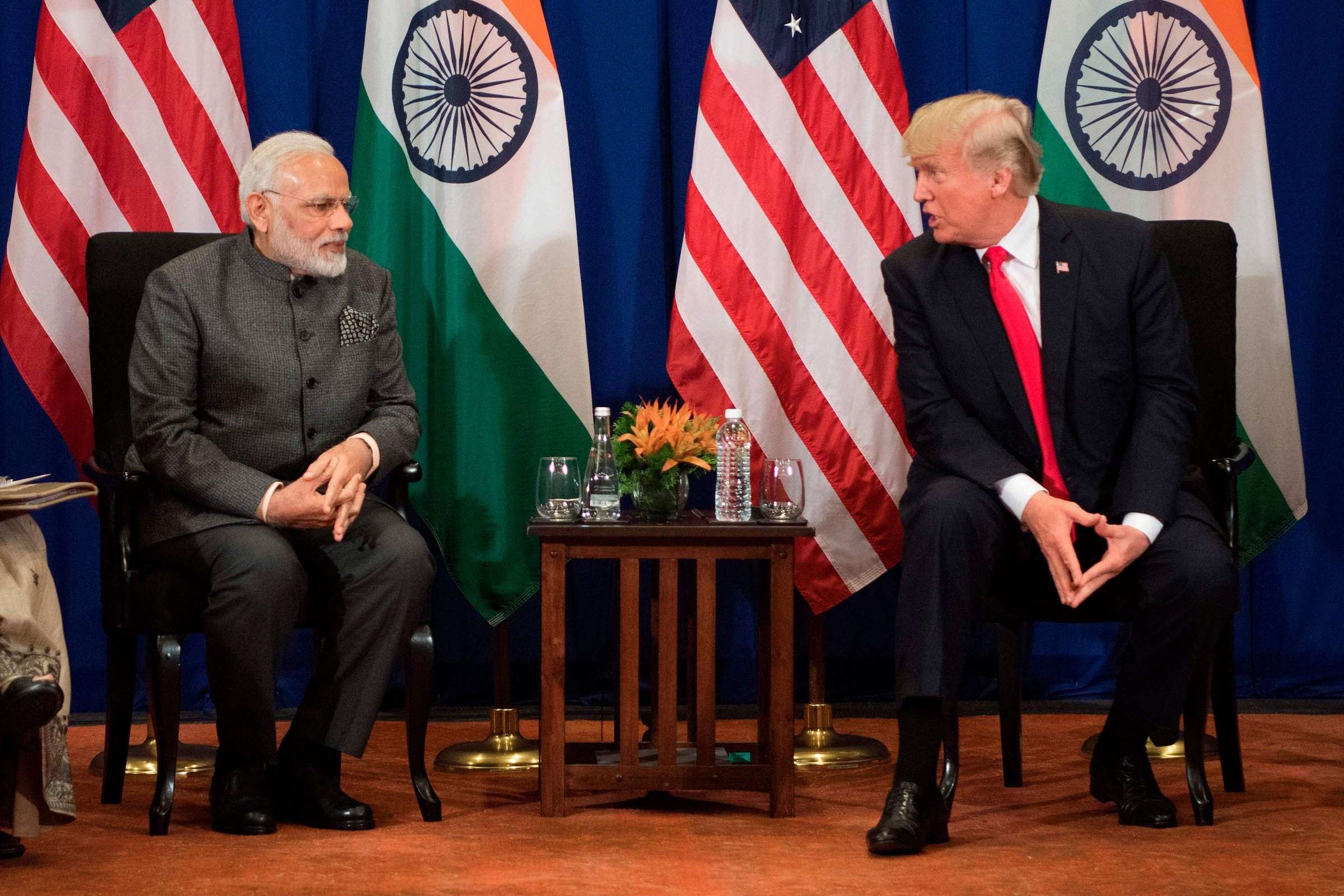
As India’s strategic links with the U.S. expand, New Delhi will find it difficult to shield its fruitful military relations with Russia. In theory, India does not have to face a binary choice between allies, but in practice, may increasingly be faced with precisely this predicament.
India’s bilateral ties with the U.S. are on the upward trajectory. The Trump administration, building on the work done by the previous administration of Barack Obama, has been developing and strengthening strategic frameworks for a broad-based partnership with India. The emphasis shown by the Trump administration on the ‘Indo-Pacific’ concept amounts to its most significant strategic initiative towards India since the president came to power.
Taking the bilateral relations to a new level, the U.S. military recently renamed its Pacific Command as the U.S. Indo-Pacific Command. Although the move is seen as largely symbolic, it nonetheless underscores the rising significance of India in the strategic calculations of the U.S..
The Trump administration’s Indo-Pacific framework, which recognizes the strong connections between the Indian Ocean region and the western Pacific, clearly puts India at the centre of this new strategic concept, notwithstanding the different interpretations as to what this means to different countries. But the political impetus for the Indo-Pacific is unmistakably clear: China. While the Trump administration’s ‘Free and Open Indo-Pacific Strategy’ is still in the early phases of conceptualization, China’s increasingly active presence in the Indian Ocean, as well as its relentless efforts to expand its geopolitical reach in Asia and beyond through the use of trade and its military, are consolidating the emergence of an Indo-Pacific region as a new and meaningful strategic community.
There is near unanimity that a new “great game” is unfolding, one which manifests itself in the maritime domain, and in which the control of sea lanes and ports will be the game-changer. China seems to have taken the lead in this new geopolitical chess game with Chinese President Xi Jinping’s pet geopolitical project—the Belt and Road Initiative (BRI)—which seeks to redraw the map of the Asian landmass while preventing India from adopting a more systematic approach to the region. Reacting to Xi’s grand strategy, Indian Prime Minister Narendra Modi’s government has responded with the ‘Act East Policy’, which is aimed at substantial improvement of India’s relations with Southeast Asia, where many countries remain apprehensive of Chinese intentions in the wider maritime theater.
Matching China’s own tactics in its backyard, India is making innovative use of the trade and diplomatic tools in its strategic arsenals, although the progress of China’s BRI, coupled with India’s perceptible lack of alternate visions, is restricting New Delhi’s efforts. And, as illustrated by the recent ‘informal summit’ between Xi and Modi, India’s hedging approach—by both engaging directly with China and seeking to contain Chinese behaviour—might be the most politically expedient device to rely on while India seeks to increase its strategic alignment with the U.S.
However, the strategic confluence between New Delhi and Washington requires mutual understanding of each state’s challenges and priorities. One such stumbling block is the question of Russia, and how India and the U.S. relate to a power that the Indians perceive as friendly and cooperative, but which the Americans see in a different light. The implications of the U.S.’s new Countering America’s Adversaries Through Sanctions Act (CAATSA), whose primary aim is to alter Russia’s international behaviour, would be far-reaching on India. Although the Trump administration has assured the Modi government of the prospect of securing a ‘flexible waiver authority’ from the U.S. Congress for its financial dealings with Russia, Washington is discouraging India from going ahead with the purchase of Russian S-400 Triumf anti-aircraft and anti-missile systems.
This puts India in a considerably difficult position, since Moscow remains New Delhi’s most important defense partner, and is perceived as India’s all-weather friend. Indian planners recall that Russia has never hesitated to transfer its most sophisticated offensive weapon systems to India, including strategic bombers, battle tanks, aircraft carriers and nuclear-powered submarines, so curtailing defense links with Russia will not come easily. And, since more than 60% of Indian weaponry is of Russian origin, any punitive measure by the Trump administration could negatively impact the vital supply of spare parts, in addition to the S-400 deal. Therefore, attempting to work out what the implementation of the Indo-Pacific strategy will mean for Russian interests is a key Indian objective.
The official statement issued after last month’s ‘informal’ summit between Modi and Russian President Vladimir Putin mentions cooperation in the Indian Ocean region, which indicates that the Modi government is keen to both uphold the concept and to assure Russia that the implementation of the Indo-Pacific strategy would not be permitted to compromise prevailing warm ties between the two countries. However, Russia would certainly become critical of the Indo-Pacific strategy if its implementation were to negatively impact its arms trade with India.
The Modi government is determined to make sure that the containment of China—and not of Russia—is the ultimate focus of the Indo-Pacific strategy. But it remains to be seen whether Modi’s view of the strategy will prevail.
This analysis was first published by the Royal United Services Institute. Access the original article here
More Must-Reads From TIME
- The 100 Most Influential People of 2024
- Coco Gauff Is Playing for Herself Now
- Scenes From Pro-Palestinian Encampments Across U.S. Universities
- 6 Compliments That Land Every Time
- If You're Dating Right Now , You're Brave: Column
- The AI That Could Heal a Divided Internet
- Fallout Is a Brilliant Model for the Future of Video Game Adaptations
- Want Weekly Recs on What to Watch, Read, and More? Sign Up for Worth Your Time
Contact us at letters@time.com